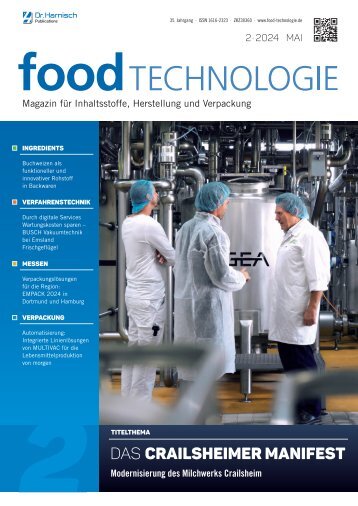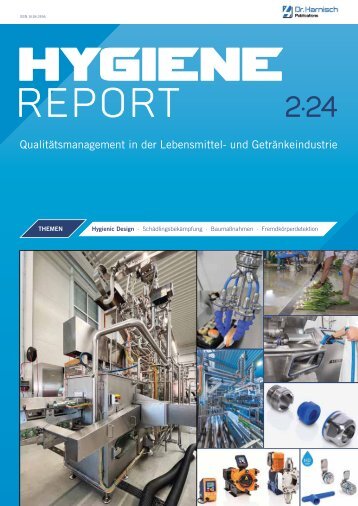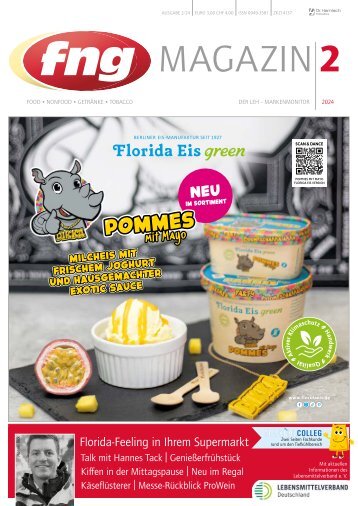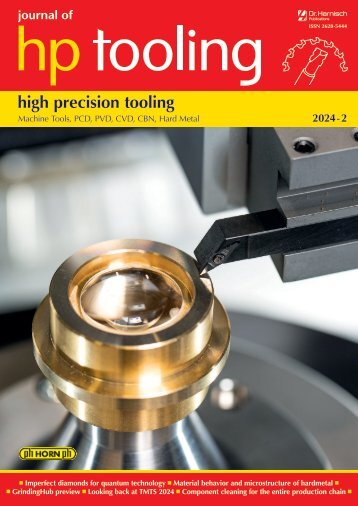WiN woodworking INTERNATIONAL 2021/1
- Text
- Safety
- Tools
- Woodtreatment
- Furniture
- Decors
- Vacuum
- Digital
- Products
- Solutions
- Machining
- Processing
- Materials
- Surfaces
- Panels
- Woodworking
TOOLS Yeah, here I
TOOLS Yeah, here I come… The diamond as a tool in the furniture industry, as well as in wood and plastic processing industries Yesterday evening, in the middle of the daily news show, I jumped up spontaneously - and my wife noted with surprise that I suddenly grabbed paper and pen. “Yeah, here I come...” was what I jotted down as the title of my next “Poly - poly or what?” article. No worries, I will not write down my full life story, but I might have been inspired by a report on TV: “Despite Corona, the German furniture industry, especially kitchen furniture, is doing well.” That comes as no surprise, considering the lockdowns, home office and confinement to the privacy of our homes. On top of that, no vacations, no money spent in restaurants and bars. A continued focus on our own home surroundings and constant activities in the kitchen inspire a change in furniture. Obviously ‐ and quite natural for Horst Lach ‐ diamonds come to mind, both in a narrower and in a broader sense, and in connection with the machining of wood and plastic composites. Doing so, I do not yet know who my readers will be, so please forgive me for this. Our example today, the diamond, is by now known as dia tool within the industry. It all began 42 to 43 years before today’s date (1978/79). Actually, it already started approximately 50 years ago, in 1973, when General Electric was the first manufacturer to offer polycrystalline diamonds under the trademark of “compax”. A development I experienced personally, and which I can only share due to my advanced age and my own profession. Therefore, I can understand how, during a continued industrial revolution, an ever-increasing demand for mass production ignited the desire for abrasive cutting tools with ever-greater stability ‐ in the end for the hardest of all things ‐ DIAMOND. And this not only in the metal industry, and in machine construction, but also for machining of all wood materials. In the mid/end 60ies, a “high-flyer” cutting material replaced previously used high-speed steel (HSS) for the first time ‐ the very name of a trademark of Krupp company in Essen reflected this “desire” for the hardest of all things ‐ Widia (based on the German term “wie Diamant” = like diamond). And then ‐ just when “hard metal” had established itself in the market, due to a parallel and fast-paced development of resin bond diamond grinding wheels ‐ out of the blue, a manufacturer named Lach-Spezialwerkzeuge GmbH (LACH DIAMANT) presented a complete dia tool and saw programme for the wood and plastic processing industry at LIGNA 1979. Under the slogan “Your Way to Diamond Economics”, Lach-Spezial offered diamond tools with tool times far-superior to carbides (up to several hundred times), according to the regulations of the trade association’s “BG-Test and BG-Form”. Despite the initially high tool price, diamond tools proved to be efficient from the start ‐ straightedged dia cutting edges were priced at 70-80 DM (Deutsche Mark) per mm, profile cutting edges at 100 DM (Deutsche Mark) per mm. Thanks to a close collaboration between LACH DIAMANT and General Electric, the prices for polycrystalline diamond inserts could be lowered significantly during the 1980-s. The development of new markets for PCD tools in the aviation and composite industry followed. As a typically medium-sized industry, furniture and kitchen furniture manufacturers took the lead in utilizing these versatile and cost-reducing production and design options and became the top customers for polycrystalline diamond cutting tools and saws; even ahead of the aluminium-machining automobile industry. At that time, the control technology of wood working machines was superior to controls of metal working machines, e.g., through the early switch from numeric (NC) to CNC controls. However, I should not forget to mention that not only furniture manufacturers profited from the new cutting material diamond ‐ but also their employees. For example, now it was no longer re- 18 No. 1 • March 2021
TOOLS quired that a master craftsman had to be present for changing the tool during each shift in a 3-shift operation, a common practice for edging machines. Without any re-sharpening, the diamond tool would run for 3 to 6 months! From the beginning to the end of its tool life, there was no loss in sharpness, which proved to be a sales-promoting factor and a special advantage, especially for decoratively coated MDF boards (medium-density fibreboards). During a visit in the USA ‐ after founding LACH DIAMOND INC. in Grand Rapids, Michigan ‐ I witnessed the production of a massive, 40 mm thick, 1.5 m-diameter oak table top in one of the larger “furniture shops”. Two very muscular men had to use all their strength to circle this table top with a vertical Knoevenagel milling cutter. I will never forget this image. Months later, the new diamond tool allowed for only one man to do the same job without any pause or break, and without the previous struggle. However, I must admit that the respective workers were not that grateful to me and did not look at me that friendly; as I found out afterwards, their heavy labour bonus had been cut. Horst Lach www.lach-diamant.de Read more about PCD tools from LACH DIAMANT in the series "Poly - poly - or what? http://bit.ly/Poly-PolySeries Program enhancement Independent cutting edge changing for everyone The SmartJointer airFace jointing cutter from LEUCO has replaceable segments. Now, it is available in smaller sizes. This gives carpentry shops and users of smaller machine types the ability to replace the diamond-tipped cutting edges by themselves. LEUCO now offers the SmartJointer airFace jointing cutter in sizes starting at a diameter of 70 mm. This makes it possible to use the tool on various edge banding machines used by tradesmen. Machines from the manufacturers EBM, HOLZ-HER and OTT can now be equipped with these from stock, for instance. The new sizes fit the smaller machine models from these manufacturers. Supplementing this, effective immediately there is a program for manual feed that is intended for use on various table shapers. The cutting edges can be replaced easily. In addition, quick replacement means that one tool set per machine is enough. New: Diamond tips for table shapers. The proven LEUCO SmartJointer airFace jointing cutter equipped with exchangeable diamondtipped cutting edges is now available for MAN feed. The cutting edges are fixed in place precisely by a 3-point bearing. Consequently, replacement does not require rebalancing and readjustment on the machine. This exact positioning guarantees constantly high milling accuracy and diameter consistency. A further benefit: Segment and gullet form a single unit and are re-placed entirely. As a result, the lightweight aluminum tool body achieves a very long service life and can be used multiple times. www.leuco.com The 35° axis angle enables the diamond-tipped SmartJointer to joint solid wood and wood-based materials without chipping. The diamond tips also mean longer edge lives. No. 1 • March 2021 19
- Seite 1 und 2: ISSN 1438-1672 · Vol. 39 · No. 1/
- Seite 3 und 4: EDITORIAL Slightly optimistic ....
- Seite 5 und 6: Impressum ISSN 1438-1672 WiN - wood
- Seite 7 und 8: MACHINING TECHNOLOGY Screen view of
- Seite 9 und 10: MACHINING TECHNOLOGY Modernizations
- Seite 11 und 12: pared with other electromechanical
- Seite 13 und 14: MACHINING TECHNOLOGY Patented Twin-
- Seite 15 und 16: MACHINING TECHNOLOGY VDMA Woodworki
- Seite 17: TOOLS The topic of finishes and dec
- Seite 21 und 22: DECORS Indoor and outdoor Joinery w
- Seite 23 und 24: FURNITURE Furniture design with the
- Seite 25 und 26: SURFACES BASF introduces portfolio
- Seite 27 und 28: COMPANIES GiardinaGroup A good 2020
- Seite 29 und 30: COMPANIES Carpenter’s glue for in
- Seite 31 und 32: USER REPORT failed due to a malfunc
- Seite 33 und 34: FAIRS LIGNA.21 in full swing The pr
- Seite 35: Guide to Products and Manufacturers
Unangemessen
Laden...
Magazin per E-Mail verschicken
Laden...
Einbetten
Laden...


























































































































































































































































































